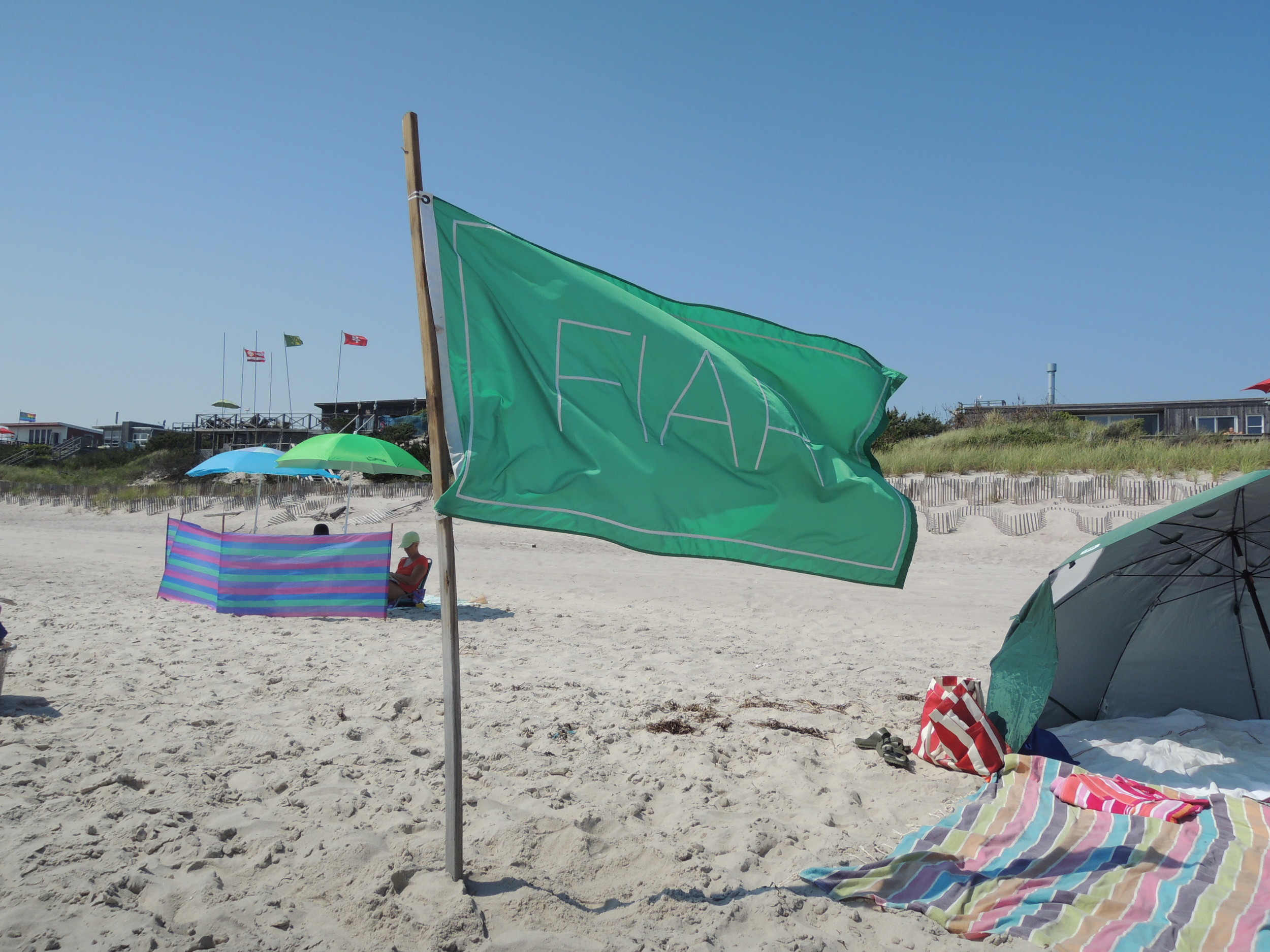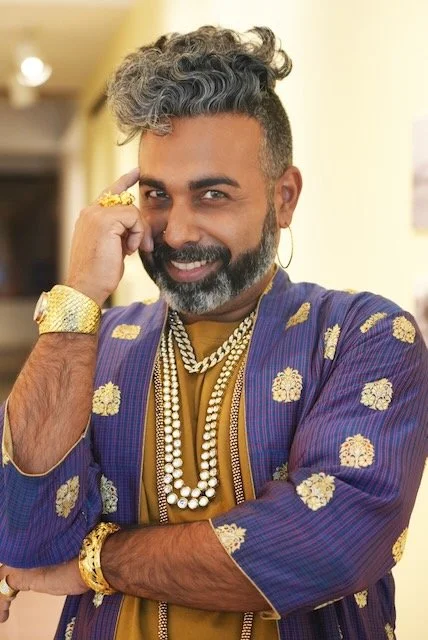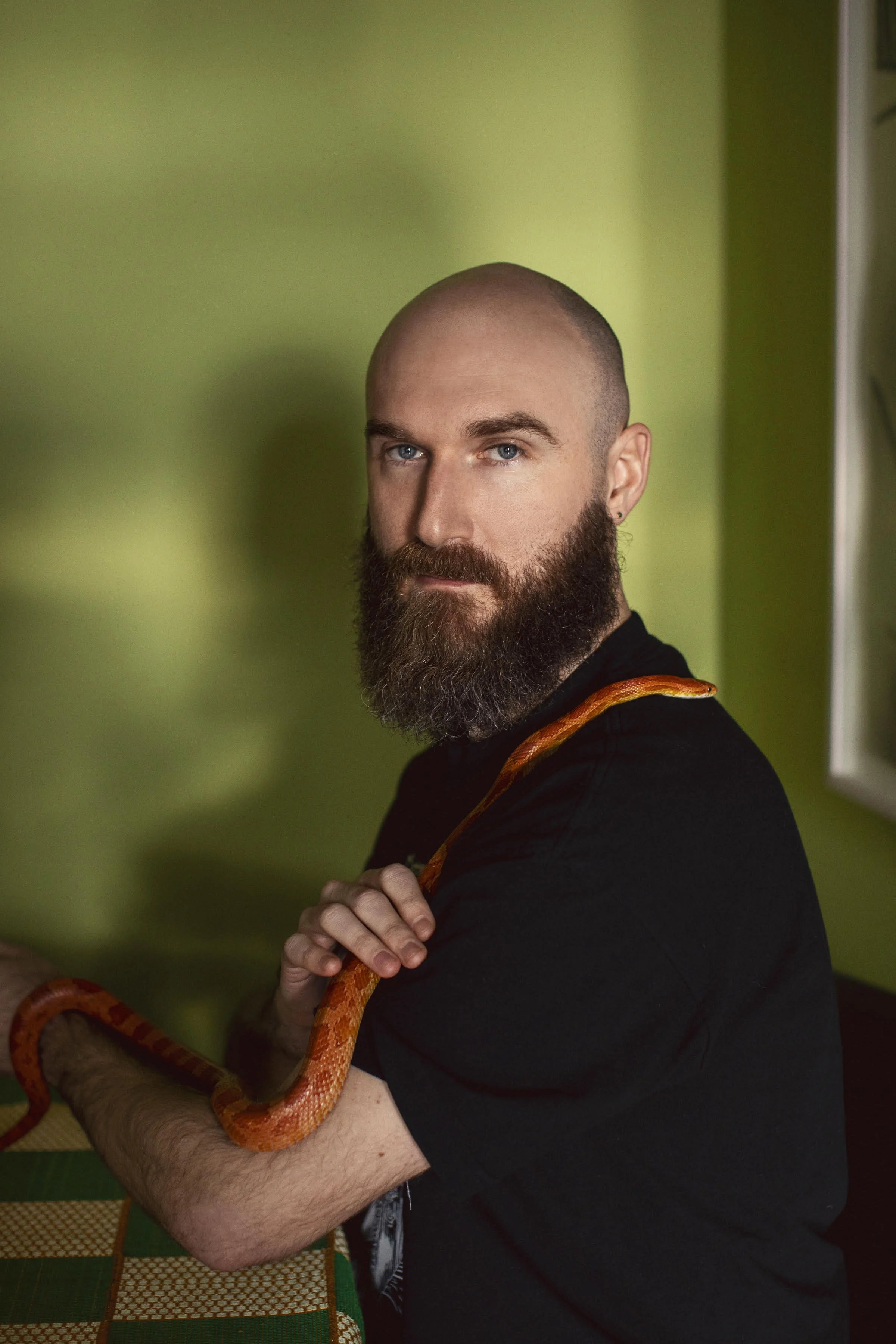Congratulations to the Artists in Residence
for the 2023 FIAR Summer Season
Top row, left to right: Marcel Alcalá, Elliott Jerome Brown, Jr., Caleb Craig
Bottom row, left to right: Joseph Liatela, Amina Ross, Sara Stern
FIAR 2023 ARTISTS IN RESIDENCE (FIAR'23)
Marcel Alcalá (they/them)
Los Angeles, CA
Elliott Jerome Brown, Jr. (he/him)
Queens, NY
Caleb Craig (they/she)
Los Angeles, CA
Joseph Liatela (he/him)
New York, NY
Amina Ross (they/them)
New York, NY
Sara Stern (she/they)
New York, NY
FIAR 2023 SCHOLAR IN RESIDENCE (FIAR'23)
Kareem Khubchandani (any pronouns)
Boston, MA
FIAR 2022 ARTISTS IN RESIDENCE (FIAR'22)
Jen Everett (she/her)
St. Louis, MO
Sunny Leerasanthanah (she/they)
New York, NY
Adam Liam Rose (he/they)
New York, NY
Moises Salazar Tlatenchi (they/them)
Chicago, IL
Darryl DeAngelo Terrell (they/them)
Detroit, MI
Willa Wasserman (she/her)
New York, NY
madison moore: there’s always room for dancing: Performance Lecture, as part of Nightlife-in-Residence, March 3, 2022. Performance view, The Kitchen, NYC. Within Sadie Barnette: The New Eagle Creek Saloon. Photo by Walter Wlodarczyk.
madison moore to be First Scholar-in-Residence
During the FIAR 2022 Summer Season
madison moore is an artist-scholar, DJ and assistant professor of Queer Studies in the Department of Gender, Sexuality and Women’s Studies at Virginia Commonwealth University in Richmond, Virginia. madison holds a PhD in American Studies from Yale University, and has previously held positions at The New School, the University of Richmond and King’s College London, and has also been a visiting guest artist at the Yale School of Drama. They are broadly invested in the aesthetic, sonic and spatial strategies queer and trans people of color use to both survive and thrive in the face of rolling catastrophe.
madison’s first book Fabulous: The Rise of the Beautiful Eccentric (New Haven: Yale University Press, 2018), offers a cultural analysis of fabulousness as a practice of resistance. Other articles have been published in venues including The Atlantic, Theater, Safundi: The Journal of South African and American Studies, the Journal of Popular Music Studies and We Can Do Better Than This: 35 Voices on the Future of LGBTQ Rights (Penguin UK), edited by Amelia Abraham. madison has performed internationally at a range of nightclubs, parties and art institutions, including the Perth Festival, Performance Space Sydney, the Portland Institute for Contemporary Art, American Realness, Somerset House Studios London, Tate Britain, the Philadelphia Museum of Art, and most recently held a nightlife residency at The Kitchen in New York. madison is currently writing a book about rave scenes and queer of color undergrounds.
In Summer 2022, in addition to being the inaugural scholar-in-residence at Fire Island Artist Residency, madison will be an artist-in-residence at the Santa Fe Art Institute.
In July madison moore will present there's always room for dancing: Performance Lectureat the Ice Palace in Cherry Grove as a part of the FIAR 2022 public programs.
www.madisonmooreonline.com
Jarrett Earnest. Photo by Jonathan Grassi.
Jarrett Earnest to be Inaugural Critic & Writer in Residence
During the FIAR 2022 Summer Season
Jarrett Earnest is the author of What it Means to Write About Art: Interviews with Art Critics (David Zwirner Books, 2018); editor of Hot, Cold, Heavy, Light: 100 Art Writings 1988-2017 by Peter Schjeldahl (Abrams, 2019), The Young and Evil: Queer Modernism in New York, 1930-1955 (David Zwirner 2020), Painting is a Supreme Fiction: Writings by Jesse Murry, 1980-1993 (Soberscove Press, 2021) and Devotion: Today’s Future Becomes Tomorrow’s Archive (2022), published by the Canadian journal PUBLIC.
Curatorial projects include "Closer as Love: Polaroids 1993-2007: Breyer P-Orridge" at Nina Johnson, Miami (2019) as well as "The Young and Evil" (2019), "Ray Johnson: WHAT A DUMP" (2021), and "Jesse Murry: Rising" (with Lisa Yuskavage) (2021) all at David Zwirner, New York.
He was faculty liaison at the free experimental art school BHQFU (2014-2017) running the MFU:NYC (Fall 2016) and MFU:MIAMI (Spring 2017) seminar and fellowship, and teaching: "Radical Pedagogy Working Group" (Spring 2016); "Emotional Formalism" (Fall 2015); "Color Feelings" (with Nathlie Provosty, Spring 2015); "Object Relations" (Fall 2014) and "Object Lessons" (Spring 2014).
His criticism and long-form interviews have appeared in New York Review of Books, The Brooklyn Rail, Vulture, The Village Voice, Los Angeles Review of Books, Art in America, Art Practical, Riot of Perfume, SFAQ, The Miami Rail, Cultured, Elephant, New York Magazine, diSONARE and many exhibition catalogs, monographs and other publications.
He co-edited the books TELL ME SOMETHING GOOD: Artist Interviews from the Brooklyn Rail (with Lucas Zwirner; David Zwirner Books, 2017) and FOR BILL, ANYTHING: Words and Images for Bill Berkson (with Isabelle Sorrell; Pressed Wafer, 2015), and has guest edited issues of The Brooklyn Rail (February 2015) The Miami Rail (Fall and Summer 2017, Summer 2016, and Fall 2014) and Riot of Perfume (Summer 2018).
He has lectured widely on contemporary art as a visiting critic at Yale, MassArt, RISD, Boston University, Cornell, Concordia, SVA, SFAI, and CCA among others. In Spring 2021, Fall 2017 and Spring 2016 he was Critic-in-Residence at the LeRoy E. Hoffberger School of Painting at Maryland Institute College of Art in Baltimore.
In 2012-13 he ran the collaborative exhibition space 1:1 (pronounced "one to one") with artists Leigha Mason, Alex Sloane and Whitney Vangrin at 121 Essex Street, NYC, and curated the pop-up NITE TIDE I & II (Summer 2014) at Nina Johnson (formerly Gallery Diet) in Miami, Fl.
He has been a fellow at the Robert Rauschenberg Foundation (Fall 2014) the Key West Literary Seminar (Summer 2017) and a Director's Guest at Civitella Ranieri (Fall 2019).
In 2021 Earnest was awarded a Dorothea and Leo Rabkin prize for visual arts journalism.
www.jarrettearnest.com
April Freely (1982-2021), Executive Director In Memoriam
Photo: Juneteenth Celebration, Cherry Grove, Fire Island, 2021.
Dear Members of the FIAR Community,
It is with great sadness that we are sharing the news that our executive director April Freely has unexpectedly passed away this week. Although only with FIAR since October 2020, she had a tremendous impact on the organization. Her warmth, openness and drive helped forge new relationships on Fire Island, while also ushering in our first cohort of artists and poets post COVID. Her presence and vision will be missed, and we send our deepest condolences to her family and friends.
April was an accomplished poet and essayist. Her written work has appeared in Gulf Coast, Ninth Letter, the Academy of American Poets Poem-a-Day series, among other places. She was a Queer Art Mentorship Literature Fellow for the 2020 - 2021 season.
April was a caring and thoughtful leader, a passionate community organizer, an enthusiastic mentor and a wonderful friend. She was deeply committed to supporting LGBTQ poets and artists and expanding access for BIPOC communities. April's ability to hold space for so many in our community was one of her greatest attributes and she transformed our organization in fundamental ways.
The staff and board of FIAR are committed to ensuring this year's summer residency will go on without interruption for our artists and poets as April envisioned. Though April’s time with FIAR was short, the future she imagined for the organization was expansive, and we intend to continue this work in her honor.
July 8, 2021
Artsy
The First U.S. Residency Devoted to LGBTQ Artists Thrives on Fire Island
Aug 8th, 2017
Photo by Gregor Haufbauer Photography
“Years back, my idea of Fire Island came from what I saw in the weekly gay rags: party, party, dance music, more party,” explains Chris Bogia, an artist and co-founder of the Fire Island Artist Residency (FIAR). “That definitely wasn’t my scene—I was more into Leonard Cohen—and I did everything I could to avoid it,” he admits.
It’s early August when I speak with Bogia by phone, and he’s walking around a shingled, wind-worn beach rental, searching for a corner with decent cell service. The stilted house, which serves as FIAR’s headquarters, is nestled in a green, sand-dusted plot in the small town of Cherry Grove. It sits on the skinny strip of wooded land also known as Fire Island, just off the southern coast of Long Island and a two-hour drive from Manhattan.
“The Grove,” as the community is affectionately known, is one of several hamlets on the island that have become havens for the LGBTQ community since the mid-1900s. It’s also where Bogia, despite his initial reservations about the place, established the country’s first residency for LGBTQ artists in 2011. Since then, FIAR has attracted a cohort of gay, lesbian, and queer artists from around the world each year. In the process, they’ve become something of a family.
The idea for the residency came to Bogia after he took his inaugural trip to Fire Island in 2008. He’d caved after receiving an invitation to join a “cute guy” there for the weekend. And when he disembarked from the ferry—no cars are allowed on the island—his expectations were instantly dashed. Instead of a 24/7 rager, he found a calm, familial, refreshingly offbeat retreat, where open-mindedness reigned.
“I remember thinking ‘Wow, this is really weird and funky and awesomely diverse,’” he recalls of the Grove. “People of all ages, races, gender expressions, and lots of pets were all getting off the boat and filing into this funky town.”
By the end of on an idyllic weekend, a thought struck Bogia: “Why isn’t there a residency for gay artists here?” As a recent graduate of Yale’s MFA program, he knew the beachside community, with its remoteness, rich history, and picturesque vistas, would make for a perfect residency site. But he wasn’t about to take the project on himself—he was a struggling emerging artist, after all. So instead, he filed it in his “dream drawer,” and “hoped some rich queen would come along, have the same idea, and do something about it,” he tells me with a laugh.
The dream continued to nag at him, though. Alongside his friend, curator Evan Garza, he realized the Fire Island residency in 2011.
Bogia pooled his savings (with help from his Partner Rod Sayegh, who became FIAR's Secretary and Treasurer), rented a raggedy four-bedroom bungalow in Cherry Grove that would serve as both living quarters and studios, and began to get the word out. They created a Facebook page, posted a call for applicants, and started phoning art schools with the news. The rallying cry was simple: “Send us your queers, tell them to apply for this,” Bogia remembers.
“We didn’t have a website, and no one really knew who we were; I thought I was going to need to beg friends to apply,” he admits. But by the deadline, two weeks later, they’d received 75 applications to fill the five spots the residency could accommodate.
Artist and publisher AA Bronson and curator Bill Arning selected the first crew of residents—Travis Boyer, Ryan Brewer, Elijah Burgher, A.K. Burns, and Katherine Hubbard. And that July, Bogia, Garza, and the artists sardined into the beach house
Since then, FIAR has gained a website, two additional bungalow rentals, the occasional grant and funding from individual donors, and a long list of past residents. Their minds are filled with fond memories of making work by the beach and building a community of queer artists.
Every year since, from mid-July to mid-August, five artists working in various mediums make their way to Fire Island for the monthlong residency. In return for living and studio space by the ocean, residents are asked to give a 10-minute talk introducing their practice to the Cherry Grove community, lend work to a summer exhibition hosted in town, and organize a “family dinner,” for when guest artists like Nicole Eisenman or Zackary Drucker visit, to meet with residents and discuss their work.
The rest of the time, artists are free to spend their days as they wish. Some spill out onto the porches of the homes to make art en plein air, others head to the boardwalk to meet and observe the denizens of Cherry Grove.
“Socializing certainly isn’t required, but when you’re in close quarters with four other people, it’s hard for it not to happen,” Bogia explains. “The residency is set up to be a very natural bonding experience.”
Indeed, it’s the opportunity to meet and make work adjacent to other LGBTQ creatives that attracts many artists to FIAR. It’s also the takeaway that tends to stick with them after they go. “It was so wonderful to not have to explain my queerness, and there was an automatic connection with people,” Jesse Harrod tells me via email. A sculptor and video artist, she was a 2016 resident and has since become FIAR’s studio manager.
It was this atmosphere of freedom and familiarity that gave Harrod “permission to take further risks in my work,” she explains. “Being on the island deepened my commitment to my queer community and the need for allies.”
Babirye Leilah, a 2015 resident from Uganda, echoes the sentiment. She came to FIAR after a lifetime of repression in her home country, where homosexuality is illegal and punishable by death. “Free from discrimination, I felt so welcomed, which changed how I see everything and how I make work,” she explains. While at FIAR, Leilah made an ornate sculptural mirror from found materials, which she dedicated to the drag queens she met on the Island. She placed it outside, so that the community, and those she was honoring, could interact with it. Since then, Leilah has stayed in the U.S. and is in the process of securing asylum.
As I speak with Bogia, he’s recently welcomed the 2017 class of FIAR residents into Cherry Grove (“my spirit animal is camp counselor,” he jokes), and they’ve already settled in. Like Harrod and Leilah, this year’s participants—Charan Singh, Elizabeth Insogna, Vincent Tiley, Marta Lee, and Rodolfo Marron—have begun making work that responds to the environment and the LGBTQ community around them.
For his part, Charan has spent his time on photo essays that explore the queer experience in Delhi, where he lives and works, and where homosexuality is a crime. He’s also started a new project that “turns his gaze to Fire Island,” Bogia tells me, “where LGBTQ oppression has given way to LGBTQ sanctuary and celebration.” By interviewing long-time residents of the island about their experiences, Charan hopes to give form to the sense of freedom and safety Cherry Grove has given them—and now him.
As I get off of the phone with Bogia, he’s heading to meet the residents. Together, they’ll carry work over to the Cherry Grove Community House, one of the country’s oldest LGBTQ landmarks (along with New York City’s Stonewall and San Francisco’s Castor Theater), where they’ll hang it in the annual Fire Island art show. “Afterwards, who knows, we might all jump into the ocean,” he says, fondly.
By Alexxa Gotthardt
Good Trouble
Fire Island's LGBTQ Art Residency
June 11th, 2017
Vice
queer artist of fire island
July 14th, 2016
Hyperallergic
The Offstage Art of Brooklyn Drag Queens
November 16th, 2016
Arte
una guía de las residencias de artistas del mundo
April 9, 2015
Art Fag City
Fire Island Artist Residency Comes Into Its Own
August 21, 2012
The Wall Street Journal
A Summer Hotspot Makes a Push for Culture
August 12, 2012
Artinfo
A Guide to 20 Top Artist Residencies and Retreats
March 16, 2012
The New York Observer
Ghosts in the Sex Forest: The First LGBT Artist Residency Makes a Home on Fire Island
December 6, 2011
Art21 Blog
Chris Bogia and the Fire Island Artist Residency
October 5, 2011
artnet.com
Fire Island Gets the First LGBT Artist Residency
July 25, 2011






